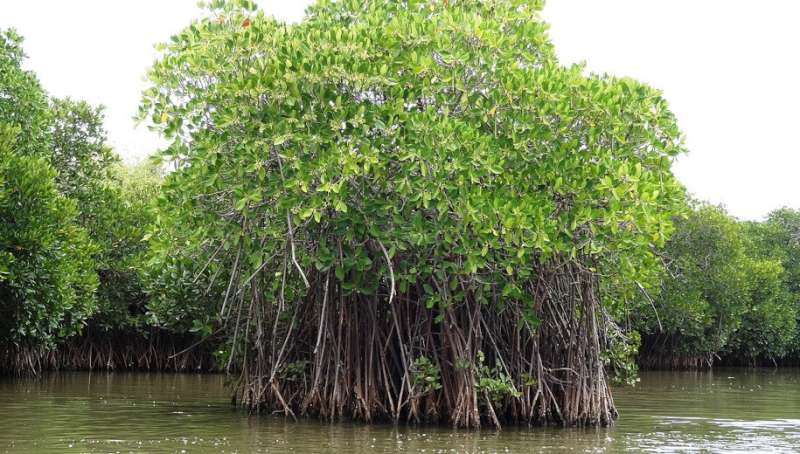Tropical cyclones can improve mangrove health

The health of India's mangrove forests, important to mitigate the effects of sea-level rise caused by climate warming, is influenced by tropical storms that change nutrient levels of coastal waters, according to new research.
Mangrove restoration can provide mitigation and adaptation solutions to climate change and support progress towards the UN's Sustainable Development Goals more broadly, says Wetland International, a non-profit dedicated to the conservation and restoration of wetlands.
The study, published in Scientific Reports, says that mangrove ecosystems have high rates of carbon sequestration which is reflected in their vast aboveground biomass and soil carbon content. Some 57 percent of the world's mangrove species can be found in India although the country only has about 3 percent of the world's mangrove forests.
Dina Nethisa Rasquinha, lead author of the study and researcher at the department of geography, University of Georgia, US, says that the study provides insights into how mangrove productivity may change with fluctuating frequency and magnitude of cyclones under a changing climate.
"Cyclones and storm events in the last two decades show a net positive effect on long-term mangrove carbon assimilation abilities across the Indian subcontinent," Rasquinha tells SciDev.Net.
"Storm-induced nutrient fluxes and freshwater supply play a crucial role in influencing productivity gradients in mangroves," says Rasquinha. "However, with increasing intensity of storms in the last few years, the likelihood of this trend continuing needs further research."
Geetha Gopinath, environmental educator and assistant professor at India's Central University of Hyderbad, tells SciDev.Net that the study on how tropical cyclones shape mangrove productivity gradientsis unique and opens new avenues in climate change research. "Mangrove forests are known to capture massive amounts of carbon and sequester (trap and store) it for millennia."
The study highlights differences in mangrove extent, species diversity and productivity between the west and east coast of India attributable to large estuarine environments shaped by the deltas of the Ganga, Brahmaputra, Mahanadi, Krishna, Godavari, and Cauvery Rivers.
Earlier studies have said that the diversity of mangrove species is higher on the east coast of India than on the west coast. Previous studies have also found that the losses occurring from cyclone events and even tsunamis were far less in coasts protected by mangrove forest cover than in other areas.
R. Sathyajith, an environmental activist based in Kerala state, says however that mangroves are declining rapidly as they are getting degraded by agriculture, aquaculture, tourism and urban development. "Over the last century [India] lost nearly half of its mangrove areas."
Sathyajith says the loss of mangroves is unfortunate because they are among the first lines of defense against incoming cyclones, storm surges and wind shear and more than proved their worth during the devastating Asian tsunami of 2004.
Maps developed by the Global Mangrove Watch team shows that the world had some 136,000 square kilometers of mangroves in 2016. South-East Asia is home to almost a third of all mangroves, some 20 percent of it in Indonesia.
Deepak Mishra, co-author of the study, says that an improved understanding of mangrove ecology at the local, regional and global levels is necessary to manage mangrove forests and integrate the newly-generated data with global research efforts.
More information: Dina Nethisa Rasquinha et al, Tropical cyclones shape mangrove productivity gradients in the Indian subcontinent, Scientific Reports (2021). DOI: 10.1038/s41598-021-96752-3
Journal information: Scientific Reports
Provided by SciDev.Net





















